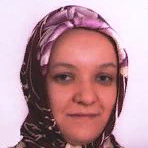International Journal of Image, Graphics and Signal Processing (IJIGSP)
IJIGSP Vol. 8, No. 7, 8 Jul. 2016
Cover page and Table of Contents: PDF (size: 556KB)
Sympathetic Skin Response: A New Biological Signal that can be used in Diagnosis of Fibromyalgia Instead of Beck Depression Inventory
Full Text (PDF, 556KB), PP.32-40
Views: 0 Downloads: 0
Author(s)
Index Terms
Biomedical signal processing, Fibromyalgia syndrome, Beck depression inventory, Artificial neural networks, Sympathetic Skin Response
Abstract
Fibromyalgia is a chronic pain syndrome that generally appears with prevalent muscular pain, sleep disorder and fatigue. Its diagnosis is very difficult. It is diagnosed in a long time after evaluating variety of psychological test scores along with physiological and laboratory tests. Psychological tests are thought not to be as reliable as laboratory test results since they depend on oral reports of the patients, and can differ from patient to patient. Beck depression inventory is one of the psychological test scores. In this study, a new biological signal that could be used instead of Beck depression inventory is introduced. For this purpose, sympathetic skin responses were used along with physiological and laboratory test results that were collected both from diagnosed fibromyalgia patients and healthy patients. A relationship based on classification was aimed to be established between the data and Beck depression inventory by using artificial neural networks. Three different artificial neural network training algorithm were used in the study. According to the results, physiological and laboratory test results and back depression inventory were estimated with the accuracy rate of 77.70\%. When all the data were used with Levenberg-Marquardt back propagation training algorithm, this rate went up to 90.91\%. According to these results, sympathetic skin responses can be safely used instead of Beck depression inventory when they were used along with other parameters that were used in fibromyalgia diagnosis.
Cite This Paper
Muhammed Kürşad Uçar, Mehmet Recep Bozkurt, Ferda Bozkurt,"Sympathetic Skin Response: A New Biological Signal that can be used in Diagnosis of Fibromyalgia Instead of Beck Depression Inventory", International Journal of Image, Graphics and Signal Processing(IJIGSP), Vol.8, No.7, pp.32-40, 2016. DOI: 10.5815/ijigsp.2016.07.04
Reference
[1]N. D. Ahuja, A. K. Agarwal, N. M. Mahajan, N. H. Mehta, and H. N. Kapadia, "GSR and HRV: its application in clinical diagnosis," in 16th IEEE Symposium Computer-Based Medical Systems, 2003. Proceedings., 2003, pp. 279–283.
[2]A. Dönmez and N. Erdoğan, "Fibromyalgia Syndrome," Clin. Dev., pp. 60–64, 1990.
[3]O. Ozkan, M. Yildiz, S. Bilgin, and E. Köklükaya, "Measuring the sympathetic skin response on body and using as diagnosis-purposed for lung cancer patients by artificial neural networks.," J. Med. Syst., vol. 34, no. 3, pp. 407–12, Jun. 2010.
[4]Ö. Özkan, M. Yıldız, and E. Köklükaya, "Improving diagnostic accuracy by supporting the laboratory tests which used for diagnosis of fibromyalgia syndrome with the sympathetic skin response parameters," SAU J. Sci., vol. 15, no. 1, pp. 1–7, 2011.
[5]Ö. Özkan, "Use of sympathetic skin response along with artificial neural networks in diagnosing of fibromyalgia syndrome," Sakarya University, 2012.
[6]U. H. Ulas, E. Unlu, K. Hamamcioglu, Z. Odabasi, A. Cakci, and O. Vural, "Dysautonomia in fibromyalgia syndrome: sympathetic skin responses and RR interval analysis.," Rheumatol. Int., vol. 26, no. 5, pp. 383–7, Mar. 2006.
[7]S. Ozgocmen, T. Yoldas, R. Yigiter, A. Kaya, and O. Ardicoglu, "R-R interval variation and sympathetic skin response in fibromyalgia.," Arch. Med. Res., vol. 37, no. 5, pp. 630–4, Jul. 2006.
[8]F. Wolfe, H. A. Smythe, M. B. Yunus, R. M. Bennett, C. Bombardier, D. L. Goldenberg, P. Tugwell, S. M. Campbell, M. Abeles, and P. Clark, "The American College of Rheumatology 1990 Criteria for the Classification of Fibromyalgia. Report of the Multicenter Criteria Committee.," Arthritis Rheum., vol. 33, no. 2, pp. 160–72, Feb. 1990.
[9]E. Yazgan and M. Korürek, Medical Electronics, 1st ed. İstanbul: Istanbul Technical University, 1996.
[10]D. L. Hudson and M. E. Cohen, Neural Networks and Artificial Intelligence for Biomedical Engineering. Wiley-IEEE Press, 2000.
[11]M. R. Bozkurt, "Preprocessing and Classification of EMG Signals by Using Modern Methods," Sakarya University, 2007.
[12]M. K. Uçar, M. R. Bozkurt, and F. Bozkurt, "Determination of New Bio Signal and Tests Alternative to Verbal Pain Scale for Diagnosing Fibromyalgia Syndrome," Int. J. Image, Graph. Signal Process., vol. 8, no. 3, p. 1, Mar. 2016.
[13]M. Toyokura and H. Takeda, "Waveform of sympathetic skin response in diabetic patients," Clin. Neurophysiol., vol. 112, no. 7, pp. 1229–1236, Jul. 2001.
[14]H. T. Atasoy, N. Atasoy, A. E. Unal, and M. Sumer, "Sympathetic skin response in migraineurs and patients with medication overuse headache.," Headache, vol. 44, no. 4, pp. 305–10, Apr. 2004.
[15]M. P. Tarvainen, A. S. Koistinen, M. Valkonen-Korhonen, J. Partanen, and P. A. Karjalainen, "Analysis of galvanic skin responses with principal components and clustering techniques.," IEEE Trans. Biomed. Eng., vol. 48, no. 10, pp. 1071–9, Oct. 2001.
[16]T. Çakir, D. Evcik, Ü. Dündar, İ. Yiğit, and V. Kavuncu, "Evaluation of Sympathetic Skin Response and F Wave in Fibromyalgia Syndrome Patients," vol. 26, no. 1, pp. 38–43, 2011.
[17]J. McBeth, G. J. Macfarlane, S. Benjamin, S. Morris, and A. J. Silman, "The association between tender points, psychological distress, and adverse childhood experiences: a community-based study.," Arthritis Rheum., vol. 42, no. 7, pp. 1397–404, Jul. 1999.
[18]O. Ozkan, M. Yildiz, and E. Köklükaya, "The correlation of laboratory tests and Sympathetic Skin Response parameters by using artificial neural networks in fibromyalgia patients.," J. Med. Syst., vol. 36, no. 3, pp. 1841–8, Jun. 2012.
[19]S. Bilgin, "The analysis of heart rate variability using wavelet transform and artificial neural networks," Sakarya University, 2008.
[20]S. Bilgin, O. H. Colak, G. Bilgin, O. Ozkan, S. Yildiz, and E. Koklukaya, "Correlation of BAI psychological test scores with heart rate variability using wavelet packet transform and artificial neural networks in fibromyalgia syndrome," in 2010 15th National Biomedical Engineering Meeting, 2010, pp. 1–4.
[21]L. Ozdemir, E. Pιnarcι, B. N. Akay, and A. Akyol, "Effect of methylprednisolone injection speed on the perception of intramuscular injection pain.," Pain Manag. Nurs., vol. 14, no. 1, pp. 3–10, Mar. 2013.
[22]M. Doğan, "Neurological diagnosis system based on neural networks," 2003.
[23]M. Bodén and M. Boden, "A guide to recurrent neural networks and backpropagation," Electr. Eng., no. 2, pp. 1–10, 2001.
[24]P. Wallisch, M. E. Lusignan, M. D. Benayoun, T. I. Baker, A. S. Dickey, and N. G. Hatsopoulos, MATLAB for Neuroscientists. Elsevier, 2014.
[25]D. E. Rumelhart and J. L. Mcclelland, Parallel Distributed Cognition: Explorations in the Microstructure of Cognition, vol. 1. MIT Press, 1986.
[26]Ç. Elmas, Artificial Intelligence Applications (Artificial Neural Network - Fuzzy - Genetic Algorithm), 2nd ed. Ankara: Seckin publishing, 2011.
[27]C. Mathworks, "Simscape TM User ' s Guide R 2015 b," 2015.
[28]M. Riedmiller, "Rprop-description and implementation details," 1994.
[29]M. F. Moller, "A scaled conjugate gradient algorithm for fast supervised learning," Neural Networks, vol. 6, no. 4, pp. 525–533, Jan. 1993.
[30]P. M. Williams, "A Marquardt algorithm for choosing the step-size in backpropagation learning with conjugate gradients," 1991.


